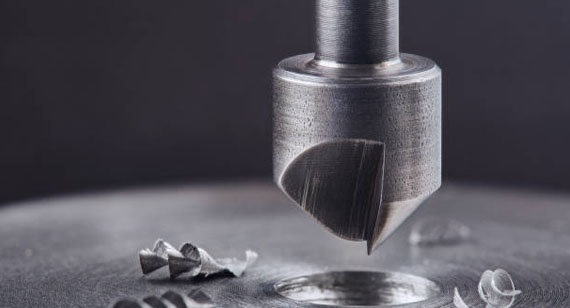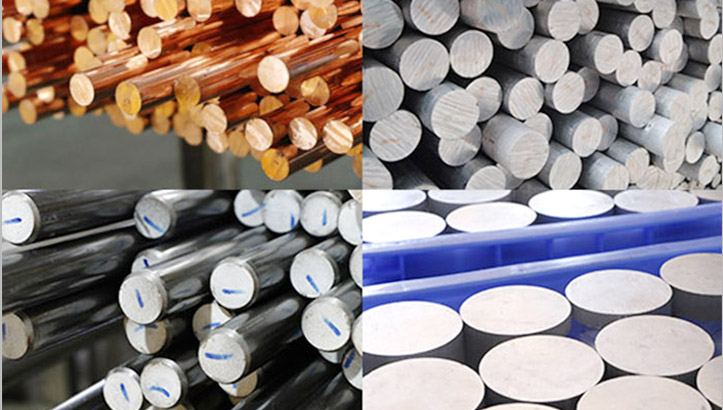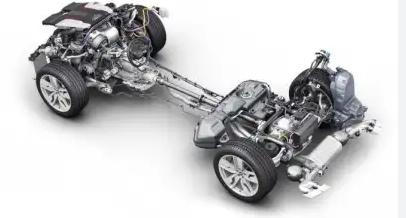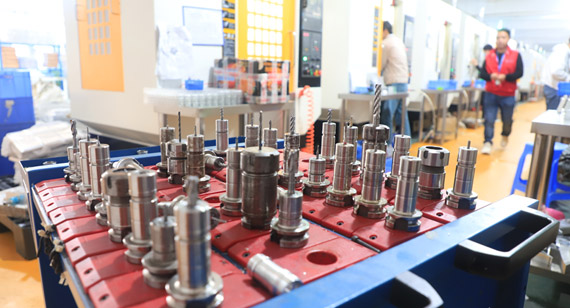What’s End Milling? End Milling Process, Different Types of End Mills
Struggling to choose the right milling process or tool for your project can lead to costly errors and delays. Without understanding the intricacies of end milling, such as proper tool selection and machining techniques, you might compromise part quality or machine efficiency. In this article, we’ll explore the end milling process, how end mills work, and provide guidance on selecting the best end mill for your machining needs.
End milling is a critical process in CNC machining that involves using a rotating tool to cut into the workpiece, creating precision shapes and components. This versatile method can handle complex cuts, ensuring high-quality finishes and precise measurements, making it essential in various industries like automotive, aerospace, and medical device manufacturing.
Now, let’s dive deeper into how end milling works and the different end mill types you can use to optimize your machining processes.
What is End Milling?
End milling is a machining process that involves the use of a rotating end mill to cut material from the workpiece. Unlike face milling, which primarily removes material from the surface, end milling can cut into the workpiece from various angles, allowing for the creation of slots, pockets, and complex shapes. This versatility makes it one of the most widely used operations in manufacturing.
The end mill can cut both horizontally and vertically, making it suitable for a wide range of tasks. Its cutting edges are located on the tip and sides, which differentiates it from other types of milling cutters. Additionally, end mills are often used in operations like profiling, contouring, drilling, and slotting, making them invaluable in a variety of industries.
Features of End Milling Machines
End milling machines are designed to handle specific cutting tasks with precision. These machines are equipped with multiple axes for versatile movement, allowing them to achieve intricate cuts.
One of the most important features of an end mill machine is its ability to handle different types of milling tools and adjust for various cutting conditions. Modern machines often include features like automatic tool changers, high-speed spindles, and multi-axis capabilities, ensuring efficiency and precision in every operation.
End Milling Process
The end milling process begins by securing the workpiece on the machine bed, followed by the selection of the correct end mill for the material and the desired cut. The end mill tool is then rotated at high speeds while the workpiece is fed into the cutting area. During this process, the end mill removes material in chips as it cuts, shaping the workpiece according to the specified design.
End milling is a subtractive process, where material is removed from the workpiece layer by layer. The tool moves in multiple directions depending on the cutting requirements—either by moving along the x, y, or z-axis, or with more complex multi-axis movements for advanced shapes.
The key steps in the end milling process include:
Tool Selection: Choose the appropriate end mill based on the material, part geometry, and desired surface finish.
Speed and Feed Settings: Adjust the spindle speed and feed rate according to the material being machined to prevent tool wear and achieve optimal results.
Cutting Conditions: Monitor the depth of cut, cutting direction, and other parameters to ensure smooth material removal and maintain tool integrity.
By adjusting these variables correctly, manufacturers can ensure efficient end milling operations that result in high-quality, precise components.
How End Mills Work?
End mills work by rotating and removing material from the workpiece through cutting edges. These cutting edges can be flat, ball-shaped, or corner radiused, allowing them to create different features. As the end mill rotates, its teeth engage the material, removing chips to shape the part. End milling tools are specifically designed for high-precision cuts, and the tool’s geometry influences the cutting efficiency and the final surface finish.
Types of End Mills
There is a wide range of end mills available, each suited for different tasks and materials. Some common end mill types include:
1. Flat End Mills
Flat end mills are the most versatile and widely used milling tools in the industry. These mills feature a flat cutting edge, making them ideal for general-purpose milling tasks. They are commonly used to create flat surfaces, grooves, and pockets in various materials like steel, aluminum, and plastics. The flat design makes them perfect for roughing and finishing cuts, offering great performance in high-production environments.
They are commonly used for creating flat surfaces, grooves, and pockets. Their design makes them suitable for both roughing and finishing cuts, making them the go-to tool for many machining operations.
2. Ball End Mills
Ball end mills have a rounded tip, which allows them to cut complex curves and shapes. This makes them essential for tasks such as mold-making, tooling, and contouring. The spherical shape helps create rounded edges, concave surfaces, and intricate 3D surfaces. These mills are also used for finishing cuts, providing a smooth, high-quality finish compared to other mill types.
3. Corner Radius End Mills
Corner radius end mills have a slightly rounded corner instead of a sharp edge. This design reduces the risk of edge breakage and extends tool life, particularly when machining harder materials. The rounded corners also help reduce chatter during operations, leading to a more stable cutting action and a higher-quality finish. These mills are used for roughing and intermediate finishing operations.
4. Indexable End Mills
Indexable end mills are designed to have replaceable cutting edges, making them unique and cost-effective. When the cutting edges become worn, they can be replaced without having to replace the entire tool, making them ideal for high-volume machining operations. These mills are commonly used for both roughing and finishing tasks in mass production environments, offering significant cost savings over time.
5. High-Helix End Mills
High-helix end mills are designed with a higher helix angle, typically above 30 degrees, which helps achieve faster, smoother cuts. These mills are particularly effective for softer materials like aluminum and plastics, where chip removal is crucial to avoid clogging and overheating. The high-helix design allows for more aggressive cutting and faster feed rates, which increases productivity and efficiency
Materials Used in End Milling
The material being machined is one of the most critical factors when selecting the appropriate end mill. Different materials have different cutting characteristics, and the tool material must be chosen to handle the specific machining conditions. Here’s a table summarizing materials and recommended end mills:
| Material | Features | Recommended End Mill Type |
|---|---|---|
| Aluminum | Lightweight, soft | Flat end mills, 2-flute end mills |
| Stainless Steel | Tough, resistant to corrosion | 4-flute end mills, coated tools |
| Titanium | Hard, heat-resistant | Carbide end mills |
| Plastics | Easy to machine | 2-flute end mills, ball end mills |
| Brass | Machinable, durable | Flat end mills, 2-flute end mills |
Key Considerations of Using End Mills
When selecting end mills for a machining job, several factors need to be taken into account to optimize performance:
1. Cutting Speed
Cutting speed plays a crucial role in the machining process, as it impacts the heat generated at the cutting edge. Cutting speed is often tailored based on material hardness and tooling. Softer materials like aluminum and plastic can be machined at higher cutting speeds to ensure efficient material removal, while harder materials such as steel and titanium require slower cutting speeds to maintain tool life and minimize heat buildup. Adjusting the cutting speed based on the material properties and tool type will prevent excessive wear on the end mill and promote a smoother finish.
2. Feed Rate
The feed rate determines how fast the material moves into the end mill during cutting. If the feed rate is too slow, the tool may not efficiently remove material, leading to poor productivity. On the other hand, a feed rate that’s too fast can cause tool overload, vibration, or even tool breakage. The feed rate should be optimized based on the type of end mill, material being machined, and the cutting process. For example, roughing cuts require a higher feed rate, while finishing cuts often need a slower, more controlled feed rate to achieve a smooth finish.
3. Tool Material
Selecting the right tool material for the end mill is essential for ensuring efficiency and tool longevity. Carbide is highly durable and ideal for cutting hard materials such as steel or titanium at high speeds. High-speed steel (HSS) is better suited for softer materials and general-purpose applications but wears out faster in high-performance scenarios. Tools can also be coated with materials like TiN or TiAlN to further enhance wear resistance, reduce friction, and extend tool life. Coated tools are especially beneficial when machining materials like stainless steel or aluminum alloys.
4. Coolant
Coolants or lubricants are essential for managing heat buildup during cutting operations. High-temperature machining can lead to premature tool wear, reduced performance, and suboptimal material removal. The use of a suitable coolant, whether oil-based or water-soluble, helps lower friction, dissipate heat, and prevent chip welding. Additionally, coolants can clear away chips and debris from the cutting area, which helps improve the surface finish. For precise operations like finish milling, using the right coolant is crucial for extending the lifespan of your end mill and achieving superior results.
5. Tool Geometry and Flute Design
The geometry of the end mill plays a vital role in the machining process. End mills come in a variety of flute designs and geometries, such as 2-flute, 3-flute, and 4-flute designs. The number of flutes and their spacing can significantly affect cutting performance and the ability to remove chips. For example, 2-flute end mills are ideal for soft materials like aluminum as they allow for higher chip removal rates, while 4-flute mills provide greater strength and stability in harder materials like steel. The geometry of the cutting edge also affects the smoothness of the cut and the overall finish.
6. Tool Wear and Maintenance
Regular tool maintenance and monitoring tool wear are essential for consistent performance in machining. Over time, even high-quality end mills will wear down, leading to reduced precision, poor surface finishes, and potential damage to the workpiece. Regularly inspecting the tool for signs of wear, such as dull edges or chipped cutting surfaces, will ensure that it is replaced or resharpened as needed. In high-volume production environments, maintaining a schedule for tool changes or using indexable end mills (which allow for replacing only the cutting edges) can significantly reduce costs and improve efficiency.
7. Cutting Depth and Width of Cut
The cutting depth and width of cut are two parameters that affect the load on the tool, material removal rate, and the overall machining efficiency. When setting these parameters, it is important to balance depth of cut (how deep the tool penetrates the material) with width of cut (how wide the tool moves during each pass). For deep cuts, reducing the width of cut helps minimize the load on the tool, whereas for wider cuts, reducing the depth of cut prevents excessive heat buildup. These parameters should be adjusted based on the material’s hardness and the specific type of machining operation.
8. Machine Rigidity and Setup
The rigidity of the machine tool and the workpiece setup is critical for achieving accurate and efficient cuts. A stiff machine with minimal vibrations will ensure that the end mill performs at its best, providing consistent surface finishes and avoiding tool chatter. Proper workholding is essential for securing the workpiece firmly in place. Using appropriate clamps and fixtures will prevent workpiece movement during machining, which could cause inaccuracies or damage the end mill.
What are the Advantages and Disadvantages of End Milling?
End milling offers numerous advantages but also comes with some disadvantages. Understanding these pros and cons will help you decide if this is the right method for your machining needs.
The Advantages of End Milling
1. Precision
One of the standout benefits of end milling is its ability to produce parts with high precision and fine surface finishes. This makes it an ideal choice for industries where tight tolerances and superior surface quality are crucial, such as in aerospace, medical devices, and automotive manufacturing. The accuracy of end mills, particularly when coupled with CNC machines, allows for intricate cuts, including complex geometries and fine details.
2. Flexibility
End milling is highly flexible due to the variety of end mill types available. Flat end mills, ball end mills, and corner radius end mills enable machinists to handle a wide range of tasks, from general-purpose milling to contouring, slotting, and pocketing. Additionally, end milling can be used for 2D and 3D machining, making it suitable for producing complex shapes and custom profiles. This flexibility makes end milling a go-to solution for many industries with diverse machining needs.
3. Cost-Effective Tooling
Many end mills, especially indexable end mills, offer significant cost-saving opportunities. These tools allow users to replace only the cutting edges when they wear out, instead of replacing the entire tool. This not only extends the tool life but also helps reduce overall tooling costs, particularly in high-volume production environments. By replacing the cutting insert, companies can continue using the same end mill, which increases efficiency and reduces waste.
The Disadvantages of End Milling
1. Tool Wear
Like any cutting tool, end mills are susceptible to wear over time, especially when used for hard or abrasive materials. As the cutting edges degrade, they lose their ability to produce clean cuts, resulting in poorer surface finishes and potentially compromising the quality of the part. The wear rate is influenced by factors such as cutting speed, feed rate, and the material being machined. In some cases, end mills may need to be re-sharpened or replaced, leading to additional costs and downtime.
2. Slower Material Removal
Although end milling is precise, it tends to have a lower material removal rate compared to other milling methods, like face milling or high-speed milling. This is especially true when using smaller end mills or when cutting harder materials that require slower cutting speeds and reduced feed rates. The smaller the end mill, the more passes are required to remove the same amount of material, leading to longer cycle times and increased production time. While suitable for fine detailing, end milling is not always the best option for high-volume, heavy material removal.
3. Higher Tool Costs
The initial cost of high-quality end mills, particularly those made from carbide or coated materials, can be quite high. While carbide end mills offer exceptional durability and performance, especially when cutting hard materials, they come with a higher upfront cost compared to HSS end mills. Additionally, specialized coatings, such as TiN or TiAlN, can add to the tool’s cost. While these tools offer longer lifespans and better performance, the high price can be a significant disadvantage for businesses working with tight budgets or for smaller-scale operations.
4. Limited Depth of Cut
End mills, particularly those with fewer flutes, are limited in their ability to make deep cuts. While they can handle relatively shallow cuts with high accuracy, attempting to cut too deep can lead to tool deflection, vibration, or even tool breakage. This means that for deep cuts, additional passes are often required, which can slow down the overall machining process and increase the time needed for production.
Applications of End Milling in Various Industries
End milling is widely used across multiple industries to produce a diverse range of products, from precision machined parts to large structural components, such as:
1. Automotive
In the automotive industry, end milling is used to manufacture engine parts, transmission components, and brake rotors. Its precision ensures tight tolerances and high surface quality, which are essential for vehicle performance and safety. Additionally, end milling helps in creating lightweight components, improving fuel efficiency without compromising strength.
2. Aerospace
End milling produces lightweight, strong parts for aircraft and spacecraft, such as turbine blades and structural components. It’s ideal for machining tough materials like titanium and aluminum alloys, which are critical for aerospace applications. The process also supports the production of complex geometries required for aerospace components that must endure extreme conditions.
3. Medical Devices
In medical devices, end milling is used to create surgical instruments, implants, and prosthetic parts. It ensures the precision needed for biocompatible materials like titanium and stainless steel, crucial for patient safety and performance. Moreover, end milling can achieve smooth finishes essential for minimizing tissue irritation in implants.
4. Electronics
End milling is used to machine precision components like connectors and enclosures for electronic devices. It ensures high accuracy and tight tolerances, particularly for small parts like micro-switches and circuit housings. End milling also supports high-volume production of customized parts for various electronic applications.
Difference Between End Milling and Other Milling Techniques
When comparing end milling to other milling methods like face milling or drilling, the key differences lie in the type of cut and the applications:
| Milling Technique | Purpose | Applications | Advantages | Disadvantages | Key Features |
|---|---|---|---|---|---|
| End Milling | Precision cutting of edges and contours | Slotting, profiling, pocketing, and engraving | High accuracy, ability to create complex shapes | Tool wear, higher cost due to complexity | Uses end mill cutters, capable of vertical and horizontal cuts |
| Face Milling | Removing material from flat surfaces | Surface finishing, bulk material removal | Fast material removal, smooth flat surfaces | Less precision, limited to flat surfaces | Uses face mill cutters with multiple cutting teeth, typically performed horizontally |
| Drilling Milling | Producing cylindrical holes | Boring, hole-making, and countersinking | High precision for hole diameters | Limited to holes, not versatile | Utilizes drill bits or special-purpose end mills, primarily axial cuts |
| Peripheral Milling | Cutting along the periphery of a workpiece | Cutting deep slots, gear teeth, or edges | High efficiency for long cuts | Requires careful alignment, risk of deflection | Utilizes teeth on the cutter’s circumference, suitable for continuous cutting |
| Slot Milling | Creating slots or grooves in workpieces | Keyways, T-slots, or rectangular slots | High precision in creating uniform grooves | Limited to specific slot sizes and shapes | Uses specialized slot mills, often a subset of end milling |
| Helical Milling | Cutting at an angle or creating helical paths | Producing threads, helical grooves | High accuracy for angled cuts | Complex toolpath programming | Requires specialized helical cutters, combined movements of multiple axes |
Tips for Improving End Milling Efficiency
To maximize the efficiency of your end mill, consider the following suggestions. These tips will help you get the most out of your end mill operations.
1. Optimize Cutting Conditions
Adjust feed rate, cutting speed, and depth of cut to match the material and tool specifications. For example, higher speeds and lower feeds work well for finishing cuts, while lower speeds and higher feeds are better for roughing. Proper optimization reduces tool wear, enhances surface quality, and improves overall efficiency.
2. Choose the Right Tool
The tool material and geometry must suit the workpiece material and application. For instance, carbide tools are excellent for hard materials, while high-speed steel tools work well for softer materials. The number of flutes, helix angle, and coatings all impact machining performance and should be carefully selected.
3. Ensure Proper Tool Holding
Secure and precise tool holding minimizes runout and vibration, ensuring accurate machining. Use high-quality collets, hydraulic chucks, or shrink-fit holders. Regularly inspect the tool holding system for wear or damage to maintain consistent performance.
4. Maintain Tools
Tools should be inspected frequently and maintained to prevent unexpected failures. Dull tools should be sharpened to restore cutting performance, while excessively worn tools should be replaced. Cleaning tools after each use removes debris that could impact accuracy or performance.
5. Optimize Tool Paths
Advanced CAM programming can create efficient tool paths that reduce unnecessary movement and minimize machining time. Techniques like climb milling improve surface finish by reducing cutting forces, while precise entry and exit paths prevent defects and ensure smoother transitions.
6. Improve Machine Settings
Regularly calibrate the machine to maintain precision. Ensure proper lubrication and cooling to reduce tool overheating and improve material cutting. Reducing vibrations through stable machine settings enhances accuracy and prolongs tool life.
7. Select Suitable Workholding
Proper workholding prevents workpiece movement and vibration during milling, ensuring accurate cuts. Tailored solutions such as vises, soft jaws, or custom fixtures can hold the part securely while accommodating its geometry and preventing deformation.
8. Leverage Advanced Technologies
Incorporate modern machining strategies like high-efficiency milling (HEM) to balance material removal rates with tool life. Use tool condition monitoring systems to detect wear or breakage and modular tooling systems for faster and more precise tool changes.
VMT: Your Partner for Various Milling Operations
At VMT, we specialize in providing high-precision CNC machining services, including end milling for various industries. With over 14 years of experience and state-of-the-art equipment, we ensure that every part meets the tightest tolerances and the highest standards of quality. Whether you’re working with metals, plastics, or other materials, our expert engineers and efficient processes are here to support your production needs.
In conclusion
End milling is an essential technique in the world of CNC machining, offering versatility and precision for a wide range of applications. Choosing the right end mill, understanding the process, and optimizing cutting conditions can significantly enhance your machining efficiency and product quality.
Related resources: End Miling vs Face Milling: Differences Guide
Frequently Asked Questions About End Milling
What is an End Mill Used For?
An end mill is a cutting tool used in milling machines to remove material from a workpiece. It performs tasks like profiling, contouring, slotting, drilling, and cutting edges with high precision. Unlike a drill bit, it can cut in all directions, making it ideal for creating complex shapes in metal, plastic, or wood.
What is Side Milling vs End Milling?
Side milling involves cutting along the side of the workpiece to shape its edges, while end milling focuses on cutting with the tool’s end to create slots, holes, or contours. Side milling often uses the tool’s cylindrical surface for horizontal cuts, while end milling combines axial and radial cutting for versatility.
What is the Difference Between End Milling and Slab Milling?
End milling uses a tool with a cutting edge on its face and sides for detailed, multidirectional cuts, while slab milling uses a large cutter for broad, flat surfaces. End milling suits intricate designs, while slab milling is preferred for removing material from large areas efficiently.








